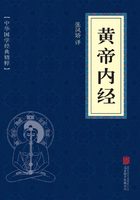Motors for flying machines must be light in weight, of great strength, productive of extreme speed, and positively dependable in action. It matters little as to the particular form, or whether air or water cooled, so long as the four features named are secured. There are at least a dozen such motors or engines now in use. All are of the gasolene type, and all possess in greater or lesser degree the desired qualities.
Some of these motors are:
Renault--8-cylinder, air-cooled; 50 horse power;weight 374 pounds.
Fiat--8-cylinder, air-cooled; 50 horse power; weight 150 pounds.
Farcot--8-cylinder, air-cooled; from 30 to 100 horse power, according to bore of cylinders; weight of smallest, 84 pounds.
R. E. P.--10-cylinder, air-cooled; 150 horse power;weight 215 pounds.
Gnome--7 and 14 cylinders, revolving type, air-cooled;50 and 100 horse power; weight 150 and 300 pounds.
Darracq--2 to 14 cylinders, water cooled; 30 to 200horse power; weight of smallest 100 pounds.
Wright--4-cylinder, water-cooled; 25 horse power;weight 200 pounds.
Antoinette--8 and 16-cylinder, water-cooled; 50 and 100horse power; weight 250 and 500 pounds.
E. N. V.--8-cylinder, water-cooled; from 30 to 80horse power, according to bore of cylinder; weight 150to 400 pounds.
Curtiss--8-cylinder, water-cooled; 60 horse power;weight 300 pounds.
Average Weight Per Horse Power.
It will be noticed that the Gnome motor is unusually light, being about three pounds to the horse power produced, as opposed to an average of 4 1/2 pounds per horse power in other makes. This result is secured by the elimination of the fly-wheel, the engine itself revolving, thus obtaining the same effect that would be produced by a fly-wheel. The Farcot is even lighter, being considerably less than three pounds per horse power, which is the nearest approach to the long-sought engine equipment that will make possible a complete flying machine the total weight of which will not exceed one pound per square foot of area.
How Lightness Is Secured.
Thus far foreign manufacturers are ahead of Americans in the production of light-weight aerial motors, as is evidenced by the Gnome and Farcot engines, both of which are of French make. Extreme lightness is made possible by the use of fine, specially prepared steel for the cylinders, thus permitting them to be much thinner than if ordinary forms of steel were used. Another big saving in weight is made by substituting what are known as "auto lubricating" alloys for bearings. These alloys are made of a combination of aluminum and magnesium.
Still further gains are made in the use of alloy steel tubing instead of solid rods, and also by the paring away of material wherever it can be done without sacrificing strength. This plan, with the exclusive use of the best grades of steel, regardless of cost, makes possible a marked reduction in weight.
Multiplicity of Cylinders.
Strange as it may seem, multiplicity of cylinders does not always add proportionate weight. Because a 4-cylinder motor weighs say 100 pounds, it does not necessarily follow that an 8-cylinder equipment will weigh 200 pounds. The reason of this will be plain when it is understood that many of the parts essential to a 4-cylinder motor will fill the requirements of an 8-cylinder motor without enlargement or addition.
Neither does multiplying the cylinders always increase the horsepower proportionately. If a 4-cylinder motor is rated at 25 horsepower it is not safe to take it for granted that double the number of cylinders will give 50 horsepower. Generally speaking, eight cylinders, the bore, stroke and speed being the same, will give double the power that can be obtained from four, but this does not always hold good. Just why this exception should occur is not explainable by any accepted rule.
Horse Power and Speed.
Speed is an important requisite in a flying-machine motor, as the velocity of the aeroplane is a vital factor in flotation. At first thought, the propeller and similar adjuncts being equal, the inexperienced mind would naturally argue that a 50-horsepower engine should produce just double the speed of one of 25-horsepower.
That this is a fallacy is shown by actual performances.
The Wrights, using a 25-horsepower motor, have made 44 miles an hour, while Bleriot, with a 50-horsepower motor, has a record of a short-distance flight at the rate of 52 miles an hour. The fact is that, so far as speed is concerned, much depends upon the velocity of the wind, the size and shape of the aeroplane itself, and the size, shape and gearing of the propeller. The stronger the wind is blowing the easier it will be for the aeroplane to ascend, but at the same time the more difficult it will be to make headway against the wind in a horizontal direction. With a strong head wind, and proper engine force, your machine will progress to a certain extent, but it will be at an angle. If the aviator desired to keep on going upward this would be all right, but there is a limit to the altitude which it is desirable to reach--from 100 to 500 feet for experts--and after that it becomes a question of going straight ahead.
Great Waste of Power.
One thing is certain--even in the most efficient of modern aerial motors there is a great loss of power between the two points of production and effect. The Wright outfit, which is admittedly one of the most effective in use, takes one horsepower of force for the raising and propulsion of each 50 pounds of weight. This, for a 25-horsepower engine, would give a maximum lifting capacity of 1250 pounds. It is doubtful if any of the higher rated motors have greater efficiency. As an 8-cylinder motor requires more fuel to operate than a 4-cylinder, it naturally follows that it is more expensive to run than the smaller motor, and a normal increase in capacity, taking actual performances as a criterion, is lacking. In other words, what is the sense of using an 8-cylinder motor when one of 4 cylinders is sufficient?
What the Propeller Does.















